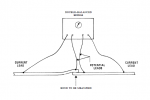I am trying to meet the following requirement, what is some options of doing this measurement:
Requirement I am trying to meet: "Electrical systems shall be connected having a grounded-neutral conductor in accordance with the requirements of NFPA 70. A common point of connection to this ground shall be required in all special purpose areas. The DC resistance between the common point of the connection and earth ground shall not exceed 3 ohms."
Requirement I am trying to meet: "Electrical systems shall be connected having a grounded-neutral conductor in accordance with the requirements of NFPA 70. A common point of connection to this ground shall be required in all special purpose areas. The DC resistance between the common point of the connection and earth ground shall not exceed 3 ohms."


